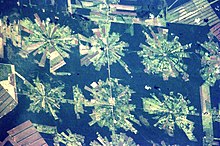Impacts on organisms

When a habitat is destroyed, the carrying capacity for indigenous plants, animals, and other organisms is reduced so that populations decline, sometimes up to the level of extinction.
Habitat loss is perhaps the greatest threat to organisms and biodiversity. Temple (1986) found that 82% of endangered bird species were significantly threatened by habitat loss. Most amphibian species are also threatened by native habitat loss, and some species are now only breeding in modified habitat. Endemic organisms with limited ranges are most affected by habitat destruction, mainly because these organisms are not found anywhere else within the world, and thus have less chance of recovering. Many endemic organisms have very specific requirements for their survival that can only be found within a certain ecosystem, resulting in their extinction. Extinction may also take place very long after the destruction of habitat, a phenomenon known as extinction debt. Habitat destruction can also decrease the range of certain organism populations. This can result in the reduction of genetic diversity and perhaps the production of infertile youths, as these organisms would have a higher possibility of mating with related organisms within their population, or different species. One of the most famous examples is the impact upon China's giant panda, once found in many areas of Sichuan. Now it is only found in fragmented and isolated regions in the southwest of the country, as a result of widespread deforestation in the 20th century.
Comments
Post a Comment